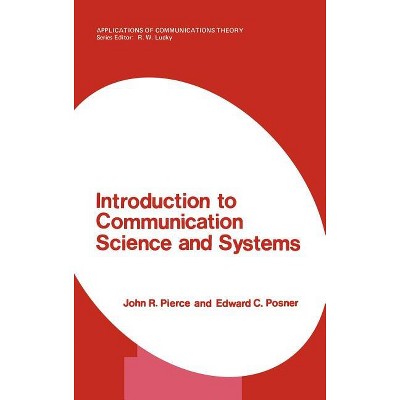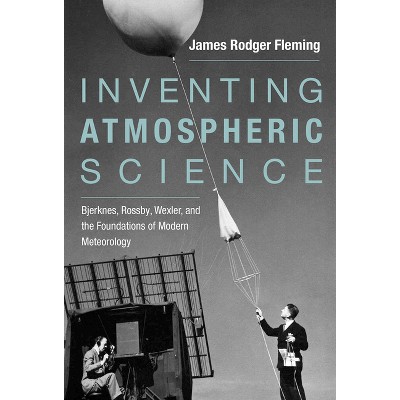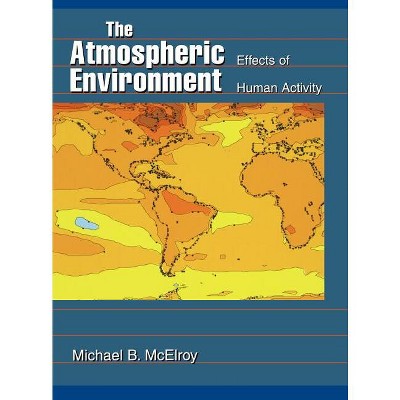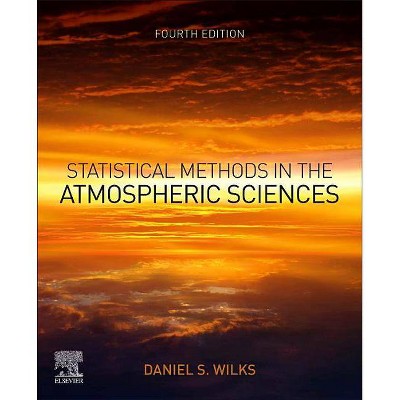Sponsored

Mid-Latitude Atmospheric Dynam - by Jonathan E Martin (Hardcover)
In Stock
Sponsored
About this item
Highlights
- This exciting text provides a mathematically rigorous yet accessible textbook that is primarily aimed at atmospheric science majors.
- About the Author: Jonathan E. Martin is a Professor in the Department of Atmospheric and Oceanic Sciences at the University of Wisconsin-Madison where he has taught since 1994.
- 352 Pages
- Science, Earth Sciences
Description
Book Synopsis
This exciting text provides a mathematically rigorous yet accessible textbook that is primarily aimed at atmospheric science majors. Its accessibility is due to the texts emphasis on conceptual understanding.The first five chapters constitute a companion text to introductory courses covering the dynamics of the mid-latitude atmosphere. The final four chapters constitute a more advanced course, and provide insights into the diagnostic power of the quasi-geostrophic approximation of the equations outlined in the previous chapters, the meso-scale dynamics of thefrontal zone, the alternative PV perspective for cyclone interpretation, and the dynamics of the life-cycle of mid-latitude cyclones.
- Written in a clear and accessible style
- Features real weather examples and global case studies
- Each chapter sets out clear learning objectives and tests students' knowledge with concluding questions and answers
A Solutions Manual is also available for this textbook on the Instructor Companion Site www.wileyeurope.com/college/martin.
"...a student-friendly yet rigorous textbook that accomplishes what no other textbook has done before... I highly recommend this textbook. For instructors, this is a great book if they don't have their own class notes - one can teach straight from the book. And for students, this is a great book if they don't take good class notes - one can learn straight from the book. This is a rare attribute of advanced textbooks."
Bulletin of the American Meteorological Society (BAMS), 2008
From the Back Cover
Mid-Latitude Atmospheric Dynamics: A First Course provides an introduction to the physical and mathematical description of mid-latitude atmospheric dynamics and its application to the diagnosis of extratropical cyclones. Requiring a background in physics and calculus but no prior knowledge of meteorology, this student-friendly text places the emphasis on conceptual understanding.Written in a conversational tone, this text is an ideal companion for a first course in the subject, delving into greater depth as the book, and the student, progresses. Real weather examples are woven through the more mathematically focused early chapters, while later chapters introduce a range of case-studies from around the globe to illustrate theoretical and phenomenological aspects of the mid-latitude cyclone life cycle.
- features end of chapter bibliography and problems
- takes a conceptual building block approach
- includes numerous real weather examples from around the globe
Review Quotes
"...a student-friendly yet rigorous textbook that accomplishes what no other textbook has done before... I highly recommend this textbook. For instructors, this is a great book if they don't have their own class notes - one can teach straight from the book. And for students, this is a great book if they don't take good class notes - one can learn straight from the book. This is a rare attribute of advanced textbooks."
Bulletin of the American Meteorological Society (BAMS), 2008
About the Author
Jonathan E. Martin is a Professor in the Department of Atmospheric and Oceanic Sciences at the University of Wisconsin-Madison where he has taught since 1994. He has received numerous accolades for his teaching including the Underkofler Excellence in Teaching Award and is a Fellow in the Teaching Academy of the University of Wisconsin. His teaching excellence is allied with research expertise in the study of mid-latitude weather systems. Professor Martin has published extensively in scholarly journals and was awarded the distinction of being named a Mark H. Ingraham Distinguished Faculty Member by the College of Letters and Science at UW-Madison.Shipping details
Return details
Frequently bought together

Trending Non-Fiction

















